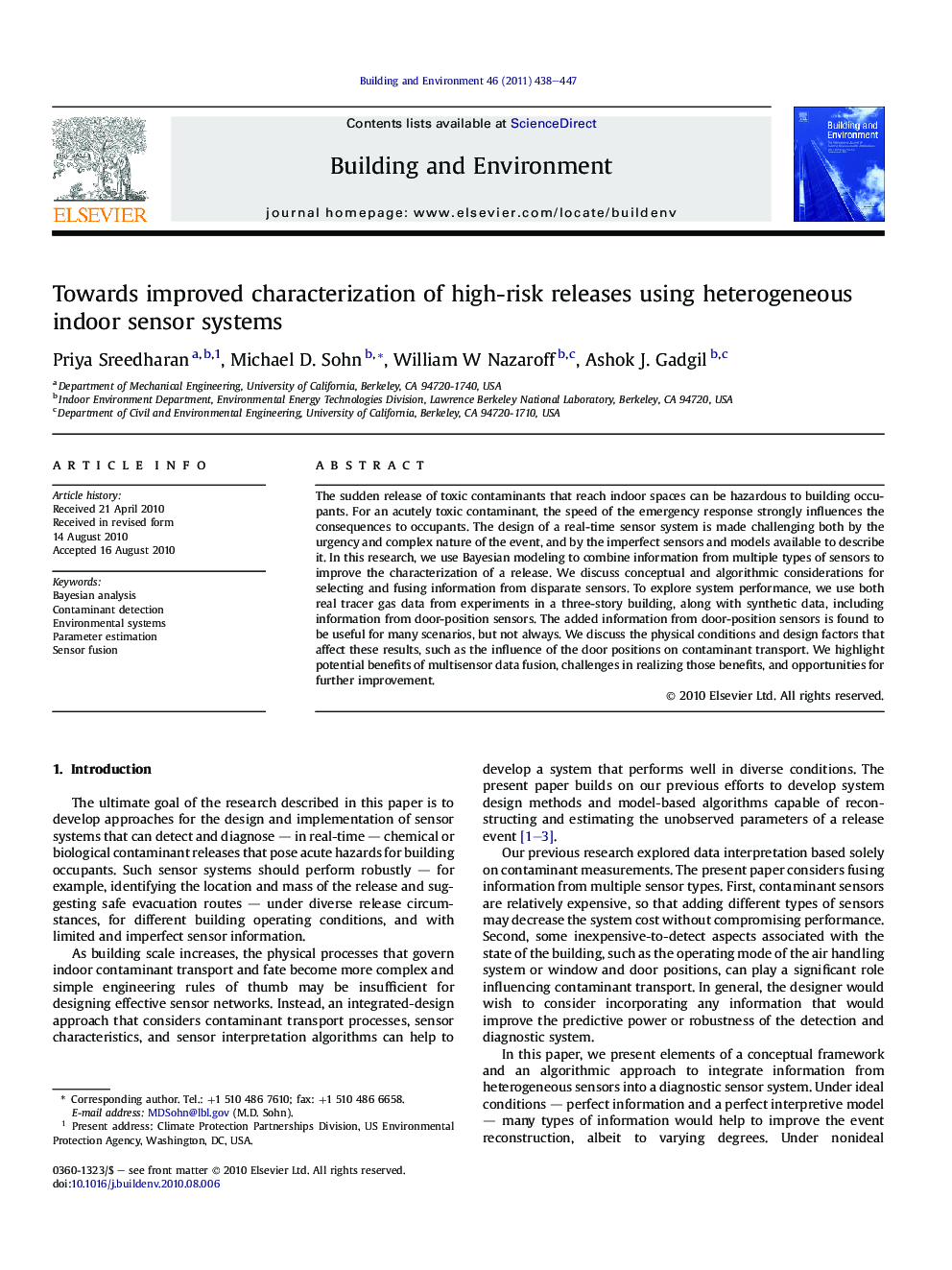| Article ID | Journal | Published Year | Pages | File Type |
|---|---|---|---|---|
| 248774 | Building and Environment | 2011 | 10 Pages |
The sudden release of toxic contaminants that reach indoor spaces can be hazardous to building occupants. For an acutely toxic contaminant, the speed of the emergency response strongly influences the consequences to occupants. The design of a real-time sensor system is made challenging both by the urgency and complex nature of the event, and by the imperfect sensors and models available to describe it. In this research, we use Bayesian modeling to combine information from multiple types of sensors to improve the characterization of a release. We discuss conceptual and algorithmic considerations for selecting and fusing information from disparate sensors. To explore system performance, we use both real tracer gas data from experiments in a three-story building, along with synthetic data, including information from door-position sensors. The added information from door-position sensors is found to be useful for many scenarios, but not always. We discuss the physical conditions and design factors that affect these results, such as the influence of the door positions on contaminant transport. We highlight potential benefits of multisensor data fusion, challenges in realizing those benefits, and opportunities for further improvement.
